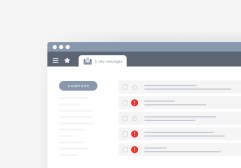Why Competitor Analysis is Crucial for Your Business Growth: An Introduction
In today’s competitive market, understanding who your competitors are and what they do is essential for the growth of your business. Competitor analysis not only helps you identify strengths and weaknesses in your own strategies but also provides insights into market trends, customer preferences, and areas for improvement. In this article, we will explore the importance of competitor analysis and how it can drive success for your business.
Understanding Competitor Analysis
Competitor analysis involves researching and evaluating your competitors’ strategies, products, services, and market position. This process helps businesses gauge where they stand in the marketplace compared to others. By analyzing their offerings, pricing models, marketing tactics, and customer engagement strategies, businesses can uncover valuable insights that inform their own decisions.

Why is Competitor Analysis Important?
Conducting a thorough competitor analysis is crucial because it allows you to identify gaps in the market that you can exploit. It also sheds light on what works for other companies within your industry so you can adapt those successful tactics to suit your own brand. Furthermore, understanding competitors’ weaknesses enables you to position yourself as a stronger alternative in the eyes of potential customers.
Key Components of Competitor Analysis
A comprehensive competitor analysis typically includes several components: identifying direct and indirect competitors; evaluating their product lines; assessing pricing strategies; analyzing marketing channels used; studying customer reviews; and examining overall brand positioning. Each component contributes to a holistic view of the competitive landscape which can enhance strategic planning.
Tools for Conducting Competitor Analysis
There are various tools available that can assist businesses in conducting effective competitor analyses. Tools like SEMrush or Ahrefs allow you to analyze online presence through SEO metrics while platforms like SimilarWeb give insights into website traffic patterns of competitors. Social media analytics tools such as Hootsuite or Sprout Social help track competitors’ social media engagement levels too.
Implementing Insights from Your Analysis
Once you’ve gathered valuable data from competitor analysis, it’s time to implement those insights into your strategy. This could mean adjusting product offerings based on competitors’ pricing or enhancing marketing efforts by adopting successful practices observed during research. Regularly revisiting this analysis ensures that you’re staying ahead of industry trends while remaining responsive to changing consumer demands.
In conclusion, competitor analysis isn’t just an optional exercise—it’s a critical part of any business strategy aimed at sustainable growth. By understanding what others in your field are doing well (or poorly), you’ll be better equipped to carve out a distinctive niche for yourself that attracts customers effectively.
This text was generated using a large language model, and select text has been reviewed and moderated for purposes such as readability.











